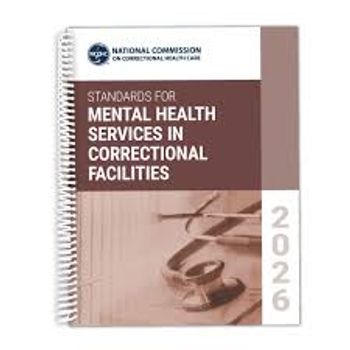
What Can Cain and Abel Teach Us About Mass Shootings?
A close analysis of the psychodynamics of Cain’s crime shows us something important about his mentality-not to be confused with mental illness.
COMMENTARY
But unto Cain … [the Lord] had no respect. And Cain was very wroth, and his countenance fell. Then the Lord said to Cain, “Why are you angry? Why is your face downcast? If you do what is right, will you not be accepted? But if you do not do what is right, sin is crouching at your door; it desires to have you, but you must rule over it.” -Genesis 4:5
Introduction
Could Cain have become a mass shooter, had he lived in our time? Yes, that Cain-Adam and Eve’s son, and the murderer of his brother, Abel. We realize this question presents a strange juxtaposition-what, after all, could a biblical figure have to do with the spate of mass shootings our country has endured over the past two decades? But if you stay with us, we think you’ll see the connection, and perhaps also understand how the issue of “mental illness” has been misapplied to the perpetrators of these horrendous mass killings.
Cain, to be clear, was not a mass murderer-usually defined as someone who kills four or more people during the same incident.1[
Cain and Abel
For those not familiar with the
“Cain was a tiller of the land while his younger brother Abel was a shepherd, and that one day they both offered sacrifice to God. Cain offered fruit and grain, and Abel offered fresh meat from his flock. For an unspecified reason, God favored Abel's sacrifice, and reject's Cain's. Cain became very angry. God does not judge Cain but asks him why he is angry giving him the opportunity to reflect and change his attitude. God then tells Cain that it is up to him what happens. If he changes, he will be able to control his anger and not sin. If on the other hand he does not, his anger will overcome him and he will commit a terrible crime. Subsequently Cain murders Abel for an unspecified reason, often assumed simply to be jealousy over God's favoritism.”2
But the “jealousy theory” turns out to be far too simple. There is a deeper psychology that we need to explore, in order to understand the character of Cain (whom we conceive as a psychological archetype, not a historical figure) and to appreciate the motivation of many mass killers in our own time-who, for the most part, are not “mentally ill” in the sense that
Prof Rein Nauta-Professor Emeritus of Psychology of Religion at the University of Tilburg-has analyzed the Cain and Abel story in psychological terms. Prof Nauta focuses not merely on the theme of jealousy, but also on the elements of shame, guilt, bravado, and narcissistic vulnerability. As
“Cain’s offering is refused, he reddens with shame. His face falls. He has been unexpectedly abandoned by the One he depends on as a farmer and whose good favor he sought. The humiliation and hurt cannot be hidden or repressed, for Abel saw everything . . . Cain was rejected even though he loved God. Being rejected without reason by someone you love, someone you . . . thought you could trust is perhaps the worst thing that can happen to a person. Cain experiences [God’s] rejection of his offering as a traitorous act . . . it turns out there are others who share in God’s love, and are even loved more, who are preferred.”4
This humiliation overturns Cain’s entire world view and sense of self, as Nauta explains:
“[Cain’s] world comes crashing down. Disappointment in the former love object is transformed into hatred of the intruder who stole the love to which one believed oneself solely entitled. Incomprehension feeds a raging jealousy.”4
This, in turn, leads Cain to his murderous act:
“The killing of Abel does indeed appear to be an example of meaningless violence, although to Cain it was an attempt to come to grips with a situation in which he felt lost and the world appeared to be without meaning. Cain would rather be actively guilty than passively ashamed . . . Shame is the narcissistic affect par excellence. All at once, one’s self-image and the image one wants others to believe in is proven false. Such shame cannot be managed or controlled. That is how it differs from guilt . . . Guilt is related to actions, to what one does. Shame, however, is linked with . . . self-presentation, with the whole of one’s existence . . . In order to survive, to avoid drowning in self-depreciation and to escape the sudden futility of existence, Cain killed his brother.”4
Nauta relates these issues to our present-day culture, with clear implications for those prone to engaging in targeted violence:
“ . . . our culture demands that fear of failure be hidden behind a facade of courage and bravado. Not to be respected when support and admiration are essential, to be laughed at when one fails are fatal injuries to a fragile existence. The shame this generates finds expression in and is, at the same time, hidden by a violent rage. When self-respect and self-esteem are fatally wounded, concern for others is of no consequence, for the only way to re-affirm one’s own victimized self is by destroying those who were witness to its demise. This kind of targeted destructiveness liberates the perpetrator from the dependence and despondency of the shaming experience.” 4 (italics added)
The mentality of the mass shooter
As we discuss in a related piece,3 there is very little clinical evidence that most mass shooters/killers are “mentally ill” in the sense psychiatrists typically understand that term. For example, DSM-5 describes the construct of a “mental disorder” as involving a
“ . . . clinically significant disturbance in an individual’s cognition, emotion regulation, or behavior . . . usually associated with significant distress or disability in social, occupational, or other important activities . . . Socially deviant behavior (e.g, political, religious, or sexual) and conflicts that are primarily between the individual and society are not mental disorders unless the deviance or conflict results from a dysfunction in the individual . . . ”5(p20)
There is little reliable evidence that most mass shooters fully conform to this construct, notwithstanding their “socially deviant behavior.” For example,
To be clear: none of this suggests that mass killers are models of mental health. While most mass shooters would probably not meet DSM criteria for a mental disorder, most appear to be deeply unhappy individuals who are struggling to contain feelings of self-pity, anger, resentment and victimization. And therein lies their affinity with Cain’s psychodynamics.
Cain’s mentality and the mass shooter
Cain’s resentful, arrogant, murderous mindset comes about after a furious bout of envy, when he believes his sacrifices are insufficiently received by God. Cain fails to obtain the recognition he believes he deserves, becoming bitter and resentful. Finally, Cain takes matters into his own hands-meting out his “wild justice” by murdering Abel. Here is the destructive power of envy, resentment and narcissism that underlie many mass shootings.
The metaphor of Cain’s “sacrifices” to God may be seen more generally as efforts made in the present-with the hope that they will ensure a favorable future. Thus, the disgruntled employee may feel his sacrifice of years of hard work has been rejected by a boss. A student who desperately seeks social acceptance at school may feel cruelly ostracized. The
For the Cain-figure, an inability to accept reality, work within its bounds, and assign meaning to his struggle is his fatal flaw. He tragically (and perhaps selfishly?) opts to destroy rather than accept the reality he sees as unjust. In doing so, he makes an enemy of life itself-a mindset that inexorably leads to nihilism and destruction. His final “sacrifice” of innocent victims is properly seen as a protest against Being itself. It is as if he says, by his murderous act, “I strenuously object to the structure of reality . . . I believe I have a better plan . . . Yet I am aggrieved and tormented-so I’ll obliterate life’s structure.”
Conclusion
All analogies are imperfect, and the one we are drawing is no exception. For example, biblical scripture gives us no reason to believe that Cain-unlike many modern-day mass shooters-wanted to “draw attention” to himself or achieve infamy. Rather, Cain essentially denies that he has done anything wrong, or even that he knows anything about it, famously (and remorselessly) asking God, “Am I my brother's keeper?”
Nevertheless, Cain shares with many mass shooters the mentality of rage, resentment, envy, jealousy, selfishness, narcissistic injury, a sense of victimization and injustice, and a deep-seated need for vengeance. Like many mass shooters, violence, for Cain, becomes a way of restoring a (false) sense of power and self-esteem. Transporting Cain magically into our own time-and positing access to lethal weapons-we can readily envision him as a potential mass shooter. Yet, importantly, nothing in the account in Genesis gives the impression that Cain is deranged, delusional, or what we would call “mentally ill.” This is in
Rather, borrowing from philosopher Friedrich Nietzsche, we might characterize Cain as we would many mass shooters: human, all too human. Indeed, as Brazilian criminologist, Anna Chavez, PhD, has astutely observed:
“There is . . . a fundamental distinction to be made between mental illness and emotional disturbance. The latter permeate and are inherent in human essence and existence, being present to a greater or lesser extent in individuals without necessarily being linked to mental illness.” (personal communication, 9/2/19).
Dr Knoll is Director of Forensic Psychiatry and Associate Professor of Psychiatry at SUNY Upstate Medical University in Syracuse, NY. He is Editor in Chief Emeritus of Psychiatric Times (2010 to 2014). Dr Pies is Professor in the psychiatry departments of SUNY Upstate Medical University, Syracuse, NY and Tufts University School of Medicine, Boston. He is Editor in Chief Emeritus of Psychiatric Times (2007 to 2010).
Disclosures:
The authors report no conflicts of interest concerning the subject matter of this article.
References:
1. Morton RJ.
2. Cain and Abel. New World Encyclopedia.
3. Knoll JL, Pies RW. Moving Beyond “Motives” in Mass Shootings. Psychiatric Times. January 14, 2019. https://www.psychiatrictimes.com/couch-crisis/moving-beyond-motives-mass-shootings. Accessed September 24, 2019.
4. Nauta R. Cain and Abel. Violence, Shame and Jealousy. Pastoral Psychol. 2009;58:65.
5. American Psychiatric Association. Diagnostic and Statistical Manual of Mental Disorders 5th edition. Arlington, VA: American Psychiatric Publishing; 2013.
6. Silver J, Simons A, Craun S. A study of the pre-attack behaviors of active shooters in the United States between 2000 and 2013. US Department of Justice: Federal Bureau of Investigation. June 2018.
7. Carey B. Are Mass Murderers Insane? Usually Not, Researchers Say. The New York Times. November 8, 2019.
8. Schule C. Tokyo Subway Dreams: Underground Meditations. In: Wolf M.
9. Ben-Noun L.
Newsletter
Receive trusted psychiatric news, expert analysis, and clinical insights — subscribe today to support your practice and your patients.

















